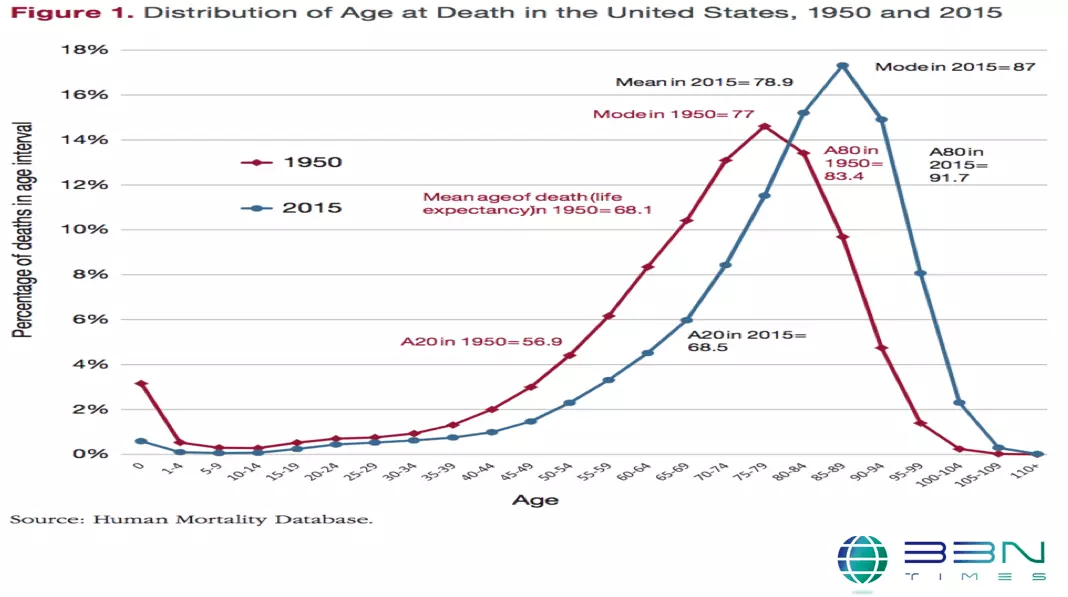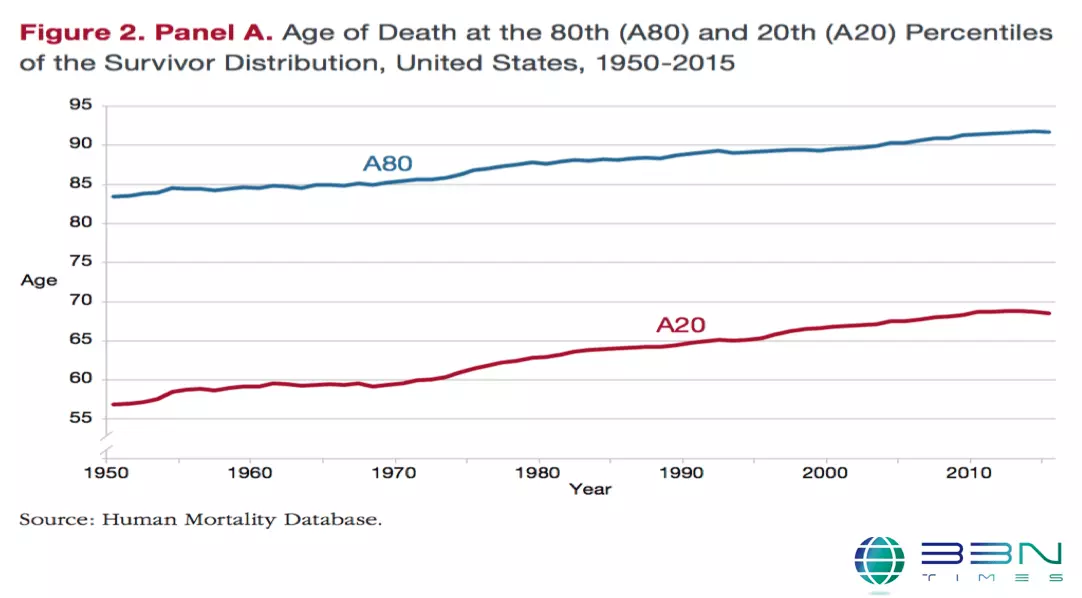Here's a topic for lunch-table, hallway, and water-cooler conversation: How much would you be willing to pay, in actual money, for an additional 30 years of life expectancy?
The question is hypothetical, but linked in reality. During the 20th century, life expectancy for an American increased by about 30 years. What are those extra 30 years of life worth? Some years back, Kevin Murphy and Robert H. Topel took a swing at t this subject in "The Value of Health and Longevity"(Journal of Political Economy, Vol. 114, pp. 871-904, October 2006). Obviously, you need to make some estimates about how people value of years of life, but their conclusion that the extra 30 yeas are worth $1 million or more per person seems plausible.
But if gains in life expectancy have considerable value, it also follows that inequality of life expectancy matters, too. Victor R. Fuchs and Karen Eggleston offer a primer on "Life Expectancy and Inequality in Life Expectancy in the United States" in a "Policy Brief" from the Stanford Institute of Economic Research (April 2018). As background, here's a figure showing the what share of people died at what age in 1950 and in 2015. The increase in life expectancy means that the average age of death has risen.

Fuchs and Eggleston are especially focused on the inequality of life expectancy. So they look at where the age of death falls for the 20th and the 80 percentile of this distribution. Then they calculate how the age of death at these percentiles has evolved over time. It's a little tricky to eyeball this result from the graph (and the authors provide more specific statistical meaures), but the inequality from 80th to 20th percentile diminished somewhat between about 1950 and 2000, but since then the degree of inequality hasn't changed much.

They argue that one way to focus public health policy would be to look at causes of death for the 20th percentile group, and especially for children in that group. They point out that current public health research is heavily focused on heart disease and cancer--which tend to be diseases of the middle-aged and elderly. They suggest some reallocation of resources to "reducing the incidence of low birth weight (e.g., promoting immunization for influenza among women of child-bearing age, especially poor and vulnerable women); assuring access to preventive and curative health services for all children (e.g., through CHIP and Medicaid); and addressing the multiple socioeconomic disadvantages that accumulate over time for poor and minority children, such as poor nutrition, exposure to pollution, and substandard housing." They also note: "Comparison with other high- income democracies indicates great potential in the United States for such an increase. For example, A20 in the United States is 69 years; in Sweden it is 74 years. The U.S. has the lowest A20 of any OECD country except for a few former Soviet republics."
For those interested in more on growth of life expectancy and inequality in life expectancy, here are a couple of useful starting points from the Journal of Economic Perspectives, where I labor in the fields as Managing Editor:
In the Spring 2016 issue, Janet Currie and Hannes Schwandt wrote "Mortality Inequality: The Good News from a County-Level Approach." They argue that to understand shifts in inequality of life expectancy in the last 30 years or so, one needs to draw distinctions by age group. From their abstract:
"Focusing on groups of counties ranked by their poverty rates, we show that gains in life expectancy at birth have actually been relatively equally distributed between rich and poor areas.... Turning to an analysis of age-specific mortality rates, we show that among adults age 50 and over, mortality has declined more quickly in richer areas than in poorer ones, resulting in increased inequality in mortality. This finding is consistent with previous research on the subject. However, among children, mortality has been falling more quickly in poorer areas with the result that inequality in mortality has fallen substantially over time. We also show that there have been stunning declines in mortality rates for African Americans between 1990 and 2010, especially for black men. Finally we offer some hypotheses about causes for the results we see, including a discussion of differential smoking patterns by age and socioeconomic status."
In the Summer 2012 issue, the team of Karen N. Eggleston and Victor R. Fuchs contributed "The New Demographic Transition: Most Gains in Life Expectancy Now Realized Late in Life." The title tells the theme, but for a bit of detail: "The share of increases in life expectancy realized after age 65 was only about 20 percent at the beginning of the 20th century for the United States and 16 other countries at comparable stages of development; but that share was close to 80 percent by the dawn of the 21st century ..."
A version of this article originally appeared on Conversable Economist.





Leave your comments
Post comment as a guest